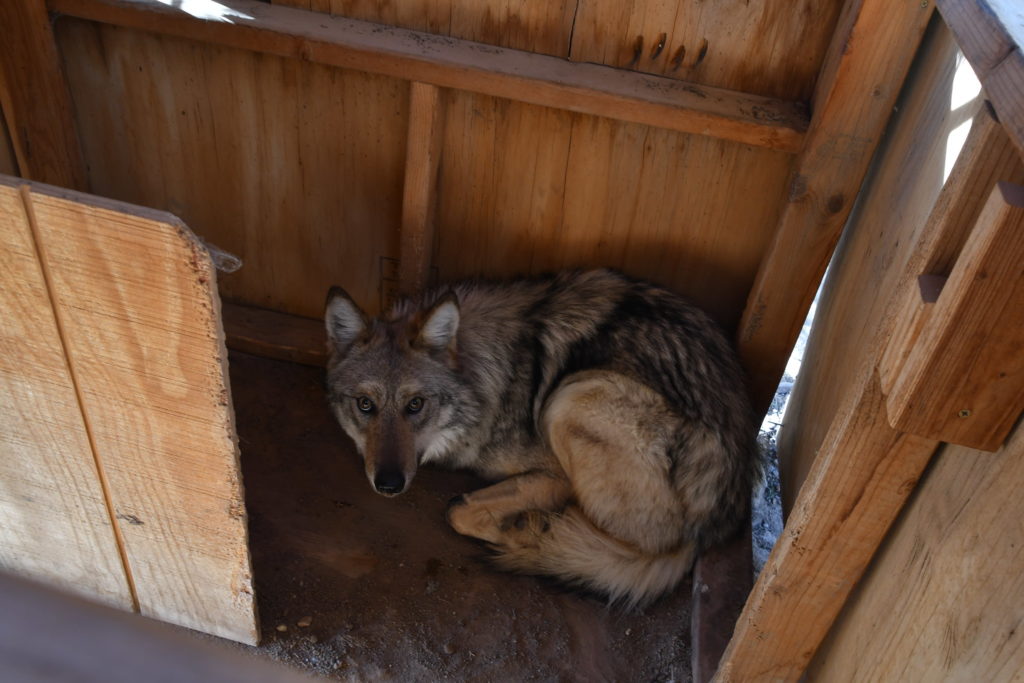Decision-makers need to come to senses on wolves

Originally published on January 30, 2024 in The Albuquerque Journal: https://www.abqjournal.com/opinion/decisionmakers-need-to-come-to-their-senses-over-mexican-wolf-recovery/article_fb452862-bed0-11ee-8711-e7b35cbe7516.html
The intrepid Asha, a young Mexican gray wolf (#2754) who journeyed into northern New Mexico, is sitting in captivity for the second winter in a row because of her natural curiosity.
In 2023, she twice wandered beyond the invisible boundary of the Mexican Wolf Experimental Population Area, MWEPA, and into perfectly suitable wolf habitat in northern New Mexico. Both times, wildlife managers went and retrieved her, insisting on limiting her species to south of Interstate 40.
And why? Not for any reason related to recovery. In fact, many of the best scientists have shown that real recovery of the species in the United States depends on additional subpopulations of wolves in northern New Mexico and the Grand Canyon ecoregion. The U.S. Fish and Wildlife Service was told this by experts who drafted a recovery plan in 2012 that defined recovery as three core populations in the U.S. with at least 250 wolves each. However, that 2012 plan was scuttled through political interference in 2013, and a much weaker plan was finalized in 2017, a revised document which ditched the northern expansion of Mexican gray wolf metapopulation and focused on the country of Mexico to meet recovery criteria, among other changes. …
The U.S. Fish and Wildlife Service is reviewing the efficacy of the recovery plan right now, as it pledged to do every five years. Western Watersheds Project and others submitted a letter to the Service giving them our perspective.
While the overall population numbers have grown since the plan was released in 2017, not all is well in wolf recovery. Mexican gray wolves need some new strategies if they are going to truly recover, such as the near-term release of additional wolves in more places — including north of Interstate 40 in New Mexico and Arizona — before the newly released population of wolves in Colorado trickles down into what could be claimed as lobo habitat.
Asha and at least eight other northward-wandering wolves before her have showed us the folly of trying to contain wild animals in arbitrary boundaries. She’s also showing us the folly of relying on the current recovery plan if we want to see wolves truly recovered. Decisionmakers at the state and federal levels need to take a hard look at the facts and let go of their opposition to allowing Mexican gray wolves recover in suitable habitat outside of the current MWEPA.
In the meantime, Asha paces in the wolf pen at Sevilleta National Wildlife Refuge, suffering for having figured out instinctually what humans are yet reluctant to accept: Interstate 40 is a roadblock in Mexican gray wolf recovery, but it’s entirely surmountable. It just takes a bit of courage to see the opportunities that await on the other side.
GRETA ANDERSON
Western Watersheds Project



